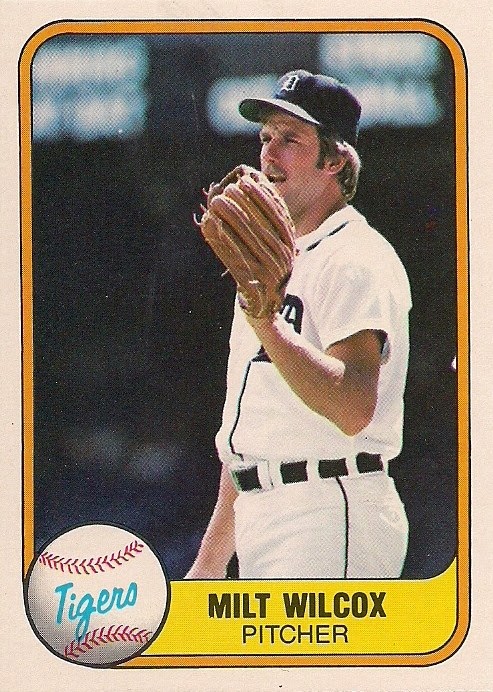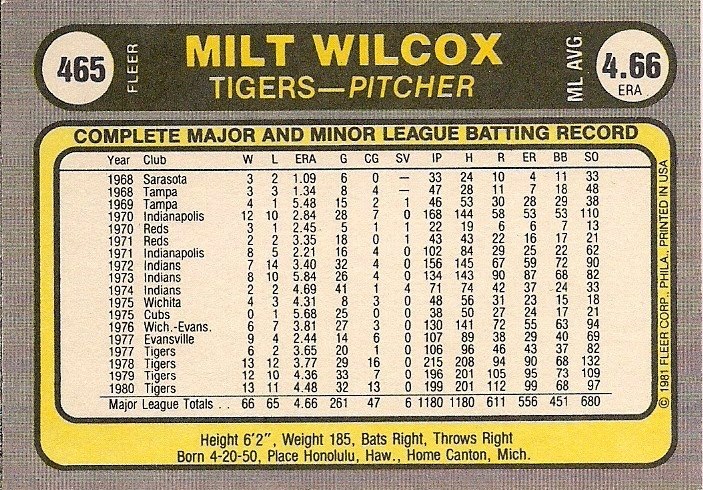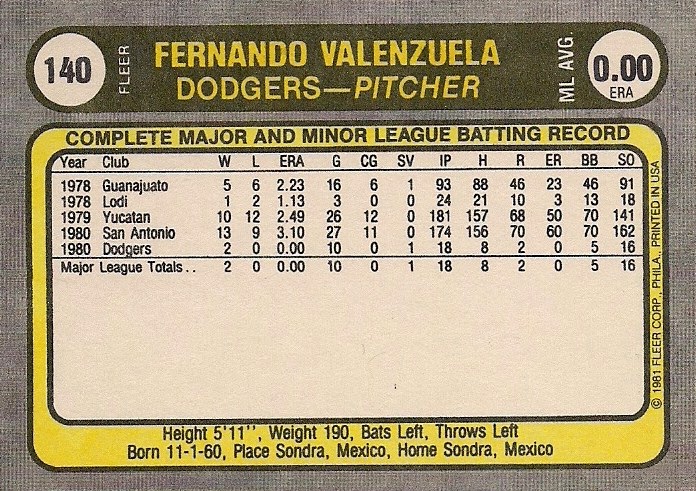I am a simple guy when it comes to numbers.
I do like them. But too many make my brain hurt. It's been that way since I sat in math class. I did well. I even did well when the algebra and calculus books came out. But I couldn't wait for it to go away forever.
No, the best thing for me when it comes to numbers is to make it simple and make it amuse me.
For me, there's no better example than 1981 Fleer.
If you collected Fleer that crazy summer of '81 when there were THREE -- that's right, THREE -- sets to chase (it's sad that people younger than age 35 have no idea how freaky that was), you probably remember one of the main components of the card backs.
Fleer featured the card number in the left-hand corner and the player's career average or career earned-run average in the right-hand corner.
It was kind of nifty, but also confusing. I was forever transposing the average with the card number and I'd think Mitchell Page's card number was 273 instead of 580. There were probably times I thought his career batting average was .580. And, yes, this is the reason why I deal with words for a living.
But there was also something fascinating about those two numbers on each card.
But before I go on, guess what these four guys have in common:
Give up?
They are the four players in my 1981 Fleer collection -- I have maybe 400 cards from the set -- that come the closest to having their average -- either batting or earned run -- match their card number.
Here they are:
All are off by only a single digit.
I was a little disappointed that I didn't find a card that matched exactly. Someone who has the complete 1981 Fleer set would have to go through the entire thing to see if there is a player in the set whose average and card number matches. And I don't know if anyone cares that much.
But I thought it was cool -- if only because matching numbers would eliminate me mixing up the card number and the average.
Yup, it's always about me.
The other thing that was cool about '81 Fleer showcasing career averages on its card backs is featured in the Dodgers set from that year.
On two players' cards you have the best ...
... and the worst ...
... career zero average that exists in baseball.
And, that, my friends, is fun with triple digits.
Impress the girls with your new-found knowledge.
Oh, that's right, word guys get all the girls.












Comments
I'm sure you can imagine though.
I'm not a set collector, but somewhere in my travels and wheelings and dealings, I picked up a an '81 Fleer set.
A quick shuffle through showed no exact matches. But, I did find a couple more close calls.
Jerry Royster
250 .249
Raphael Ramirez
266 .267
So now you'll have to have these two !!